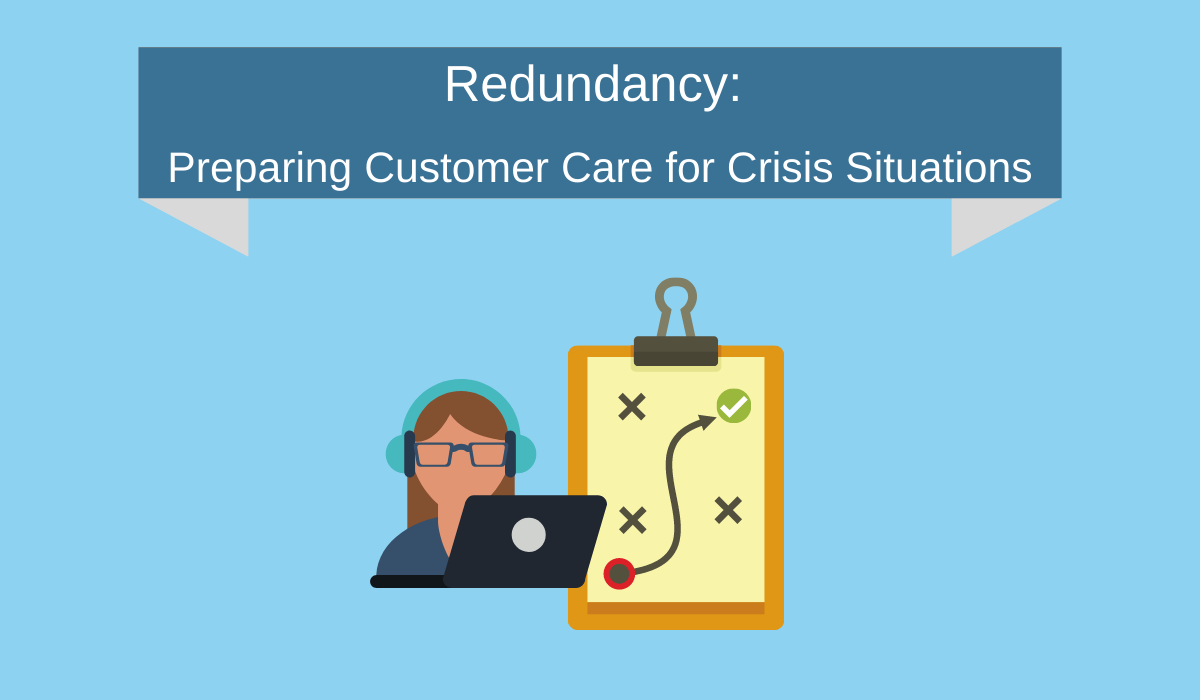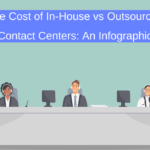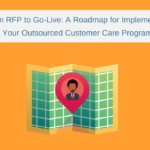Redundancy: Preparing Customer Care for Crisis Situations

Redundancy. Business Continuity. Those are major check boxes in every RFP we’ve ever responded to. Boxes to be checked on both sides of the equation – the buyer asked: “What’s your plan in case of disaster?” The bidders answered: “Here’s our plan in case of disaster….” Well, as the saying goes, humans plan and the gods laugh.
Listen to the audio or read the article
As of today, we all have at least two months of real-world experience in how we would handle a disaster. Some fared better than others. Some were able to do things previously thought impossible. Some temporarily lifted operational restrictions previously considered sacrosanct. But whatever happened, we all now know what we can do in the face of disaster and, we would wager, many in our industry have a much clearer view of what we should do to be prepared for the next disaster.
As the coronavirus continues to impact every element of our lives and businesses, those questions are more critical to answer than ever before. How do we prepare customer care for crisis situations and ensure our capacity to serve customers?
As a client, what are you looking for in a redundancy model from your strategic partner now? Has that changed in the past two months? In our corporate history, redundancy measures came in many different shapes and sizes. It seems almost naïve in retrospect, but one of the top tier redundancy options in our industry included the operation a full hot site back-up in separate geographic location. That was a great option for the not-unlikely scenario where a disaster strikes a single location unexpectedly, but that kind of geographic redundancy seems almost laughable in our current reality. A second hot site would just mean two empty offices instead of one today.
In recent years, we have been supporting clients with frequent unforecasted spikes in volume with a hybrid of brick-and-mortar and at-home support. These clients typically tend to be in businesses that are impacted by things like weather (emergency roadside assistance or same-day delivery models, for instance). That hybrid model provided the best of both worlds and when COVID came calling, it served our clients extremely well – we ramped up existing at-home capacity to the max while we transitioned all on-site agents to work-at-home over the course of three days. Challenges, of course, are amplified when you have to maintain the highest security standards for sensitive programs especially where compliance with standards like PCI, HIPAA, and other enterprise data protection requirements come into play.
As we move toward a new normal, our focus is on being able to leverage the strengths inherent in our brick and mortar operations – especially in terms of security – both physical security and data security – while enhancing our ability to pivot quickly to provide seamless or near-seamless support of our clients in a world where no one can leave their house.
While this experience has bolstered our ability to hire, onboard, and train effectively in a 100% remote model, and our ability to operate in a 99% at-home model is robust, the challenges to develop redundancy and BCPs under worldwide shelter-in-place orders may come again. Outsourcers must redesign operations and business continuity plans to make the kind of pivot that so many of us executed in full crisis mode into a standard process that can be deployed without operational upheaval.
What will that mean for your operations? Is 100% at-home the approach you’ll be seeking in your next partner? Do you need the benefit of both in-house and at-home to feel secure? Are you moving away or toward geographic redundancy/second site options as integral parts of your BCP? Have you engaged your procurement team to start crafting new questions for your next RFP as it relates to redundancy and BCP?
One thing we feel sure of – however you frame those questions up in the future, asking and answering for details on BCP will never again be a matter of “checking a box.”
![The 10 Most Important Contact Center RFP Questions [Infographic]](https://blueocean.ca/wp-content/uploads/2019/09/Blue-Ocean-Blog-9-10-19-150x150.png)


